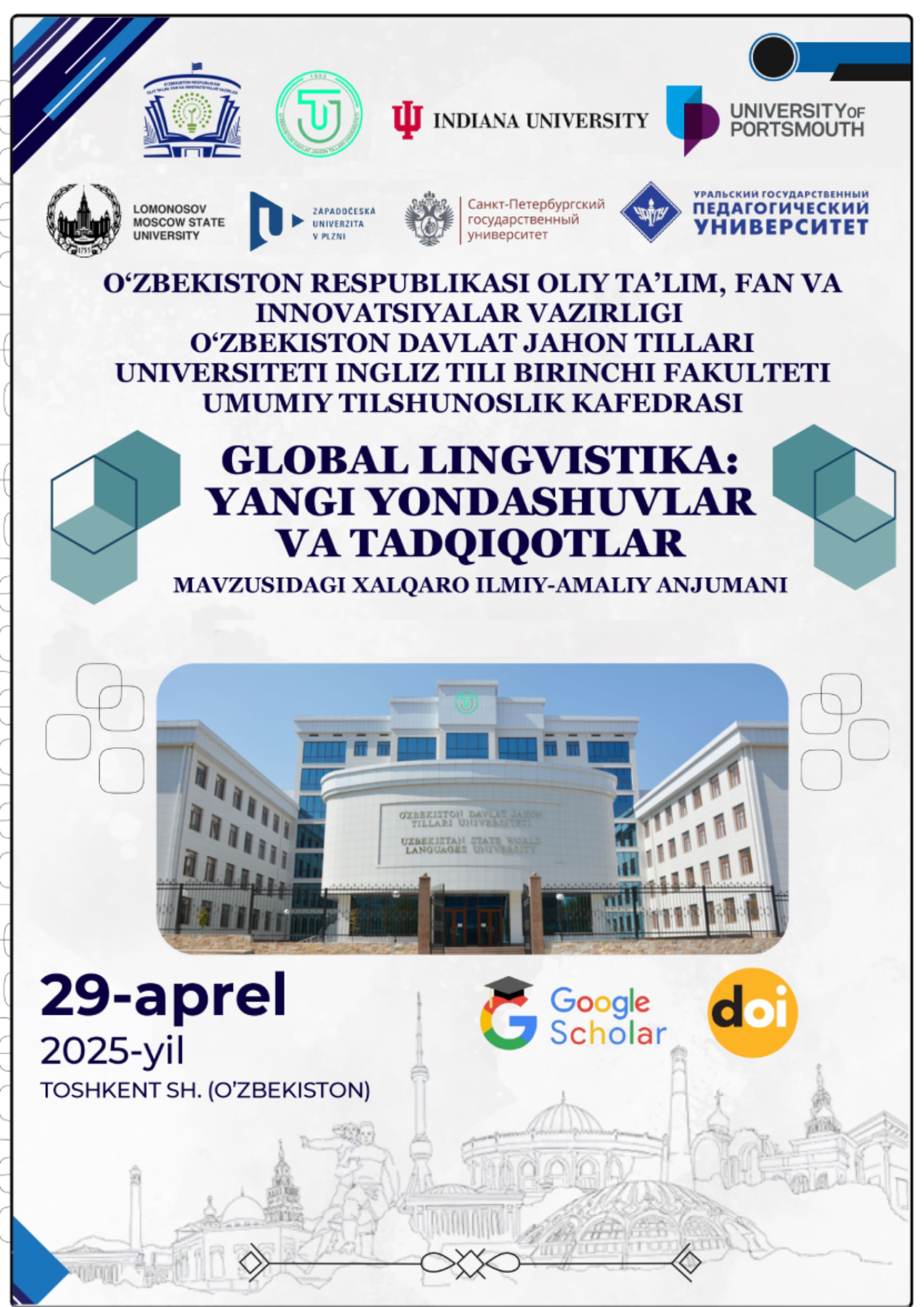DERIVATIONAL MEANS OF DESCRIBING HUMAN APPEARANCE AND CHARACTER IN ENGLISH AND UZBEK LANGUAGES
Kalit so‘zlar
affixes, description, appearance, characterAnnotasiya
This article aims to compare and contrast derivational means for describing human nature and appearance in English and Uzbek languages. Research seeks to identify and analyze similarities and differences among affixes of two different languages related to the description of human qualities. By examining affixes, suffixes, and semantically derived metaphors and phraseological units that build up descriptive words this article intends to focus on the variations in the usage of one morpheme and lexeme in two different languages and cultures.
Foydalanilgan adabiyotlar ro‘yhati
Metyakubov J (2021). Lexical Means For Describing Human Appearance And Character. Bulletin of Science and Practice.
Mithun, M. (2003). Why prefixes? Acta Linguistics Hungarica, 50, 155–185.
Štekauer (Eds.), The Oxford handbook of derivational morphology (pp. 95–117). Oxford, UK: Oxford University Press.
Wilde.O (1891). The picture of Dorian Gray. London, New York, Ward, Lock.

